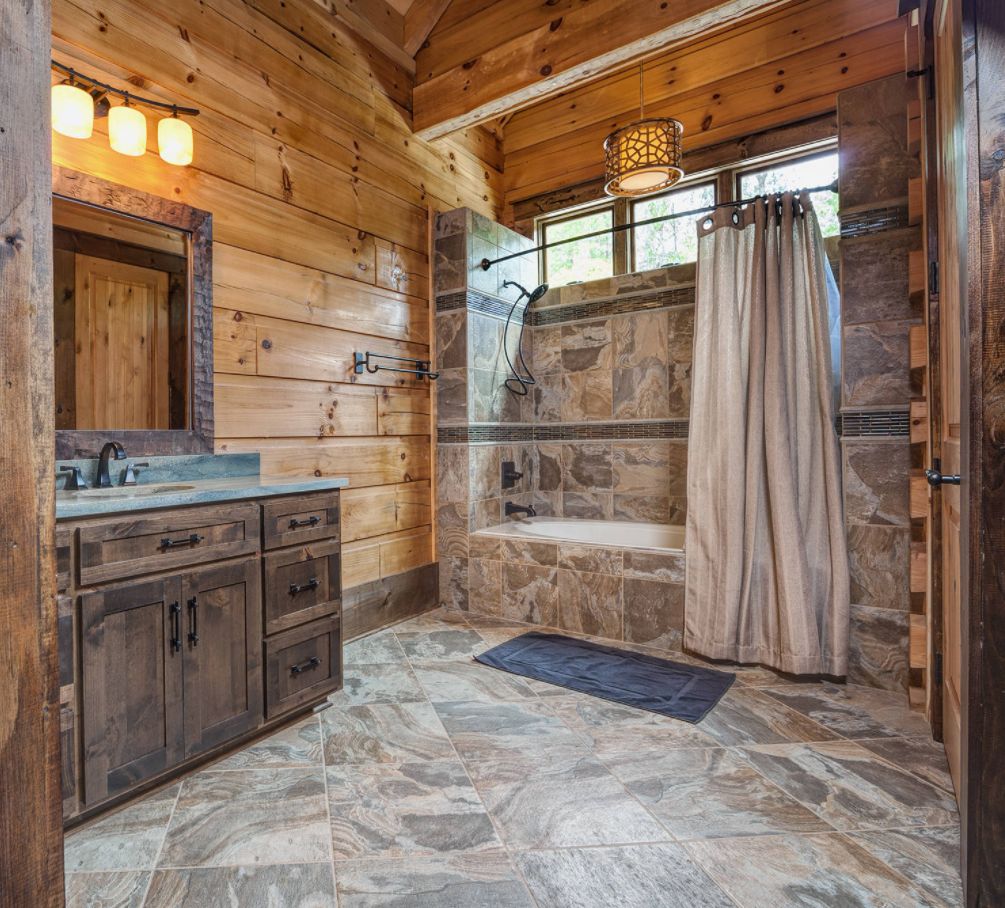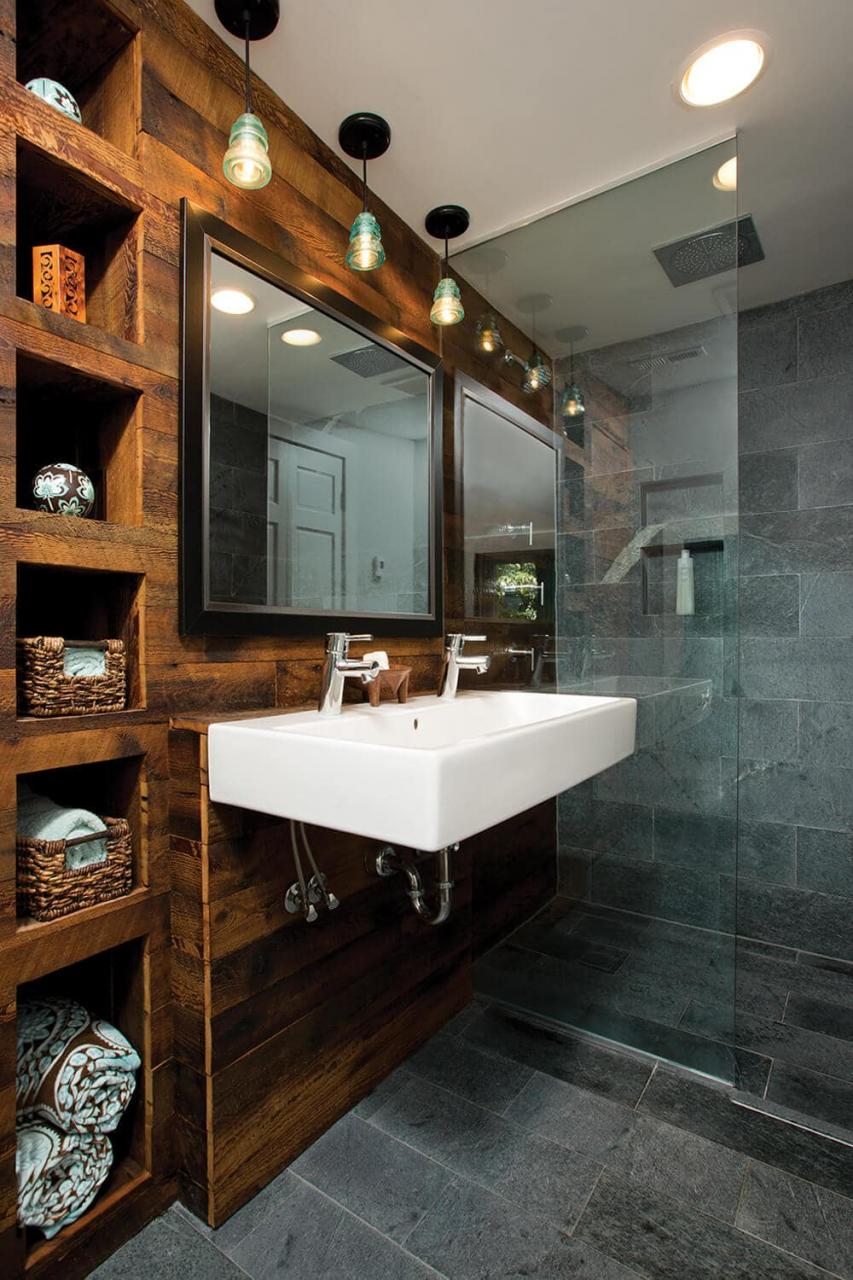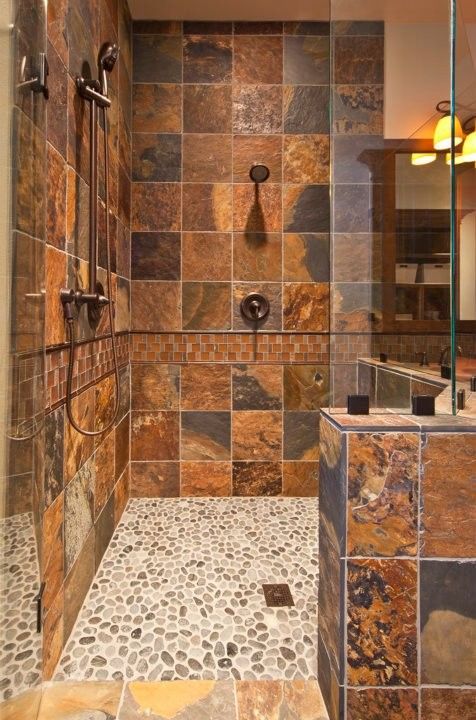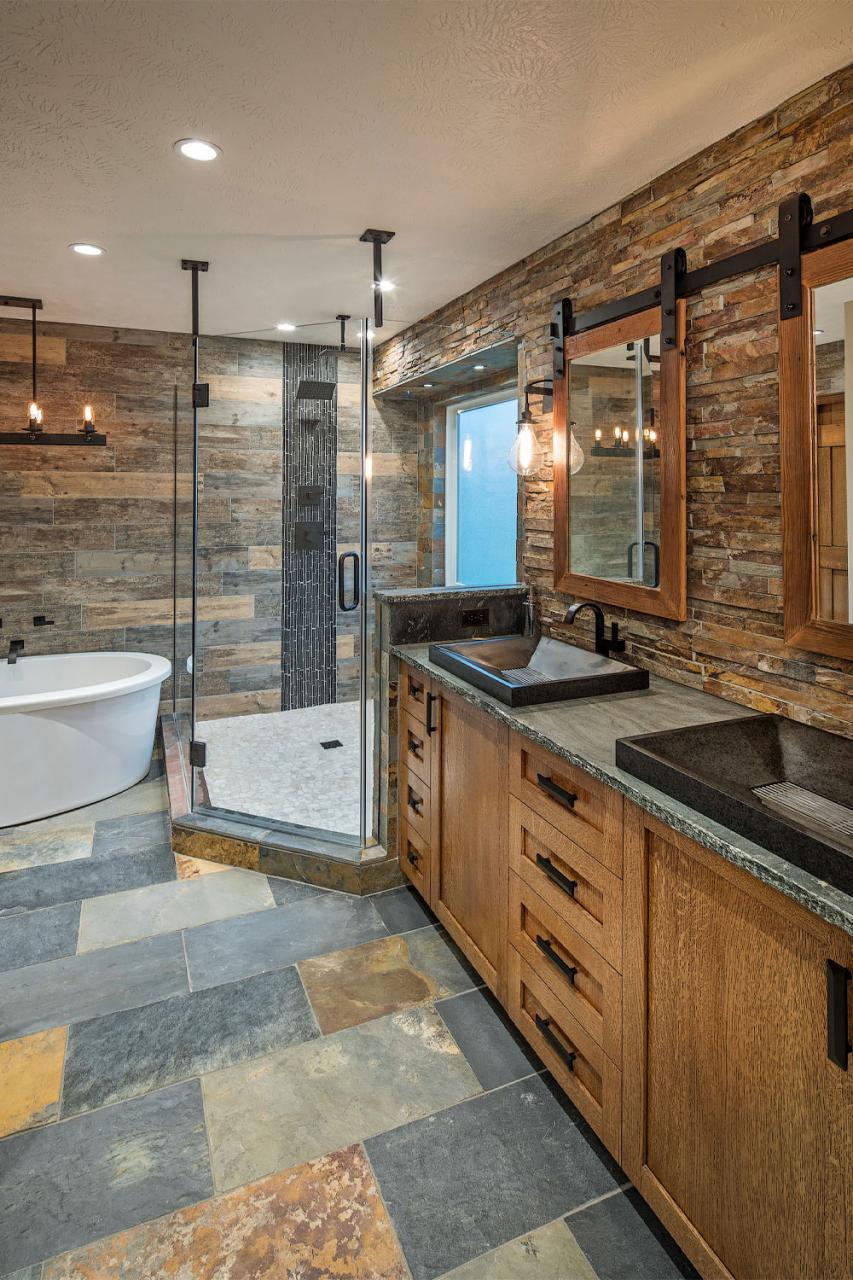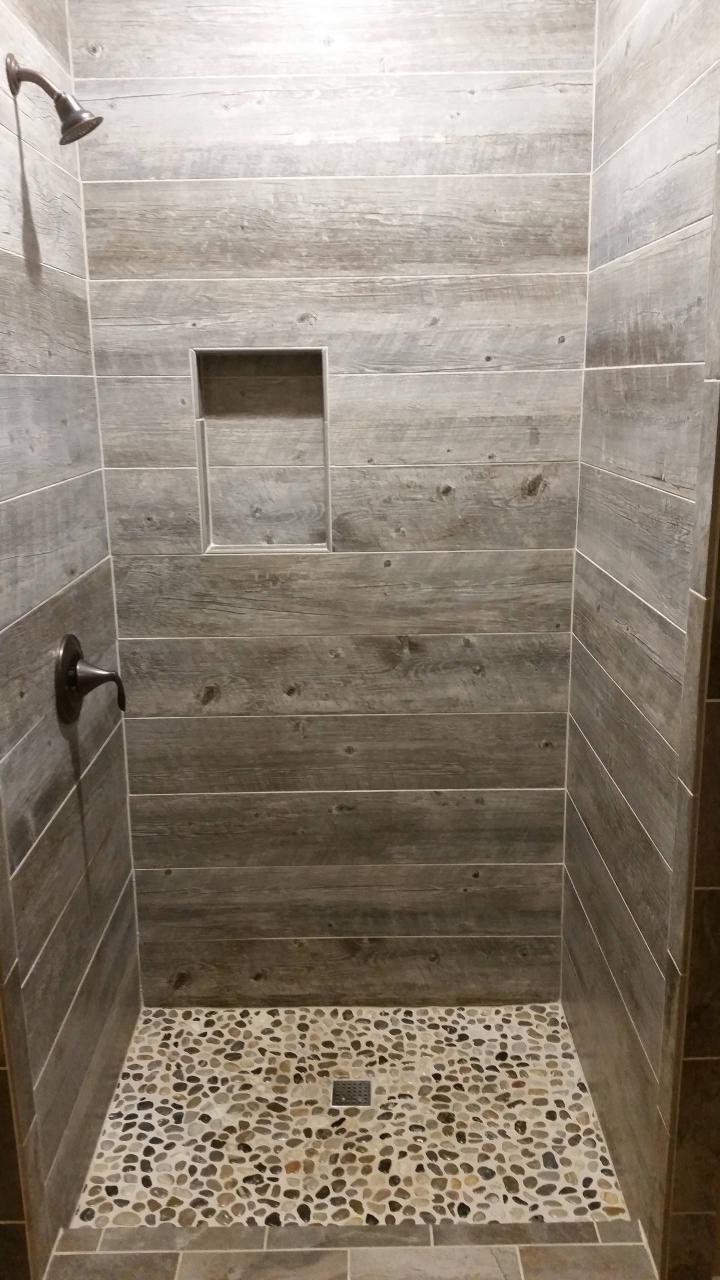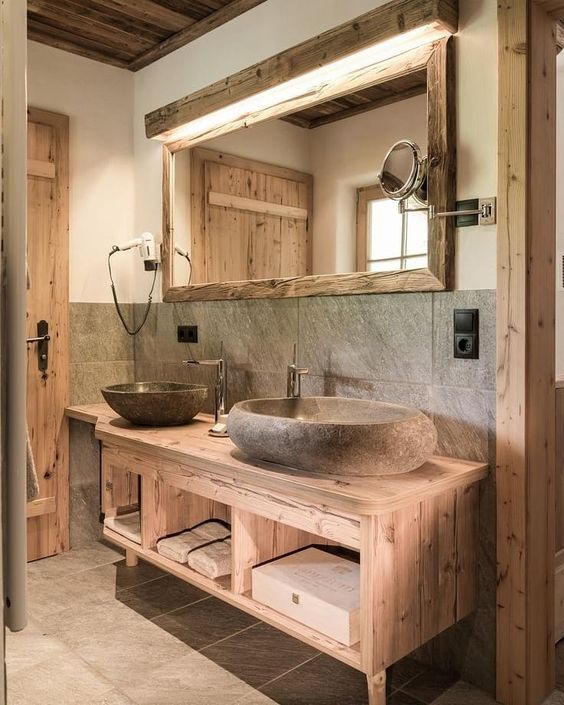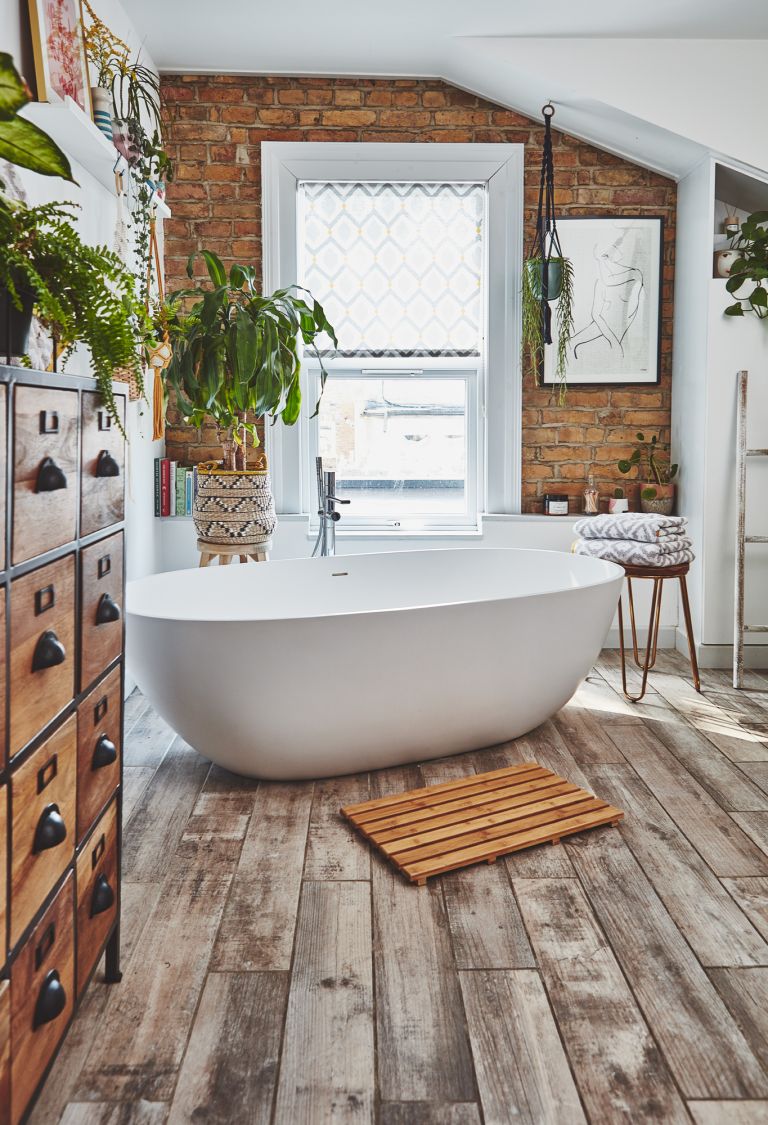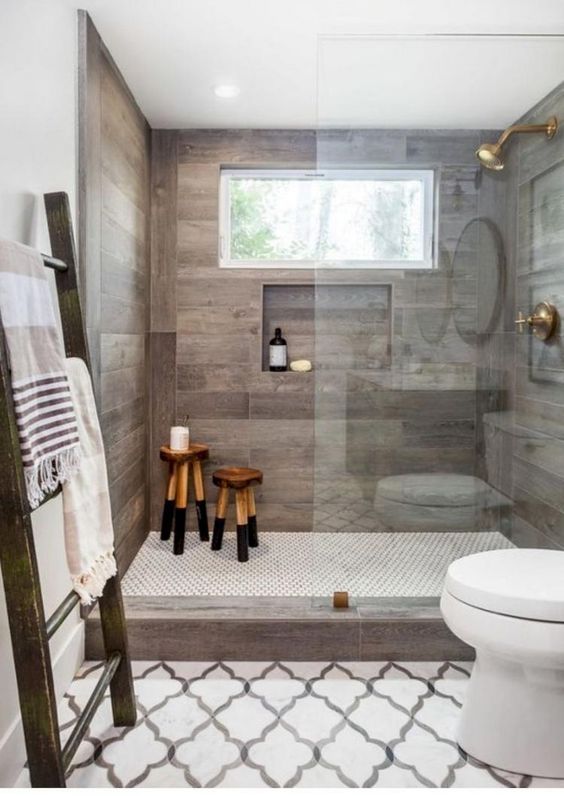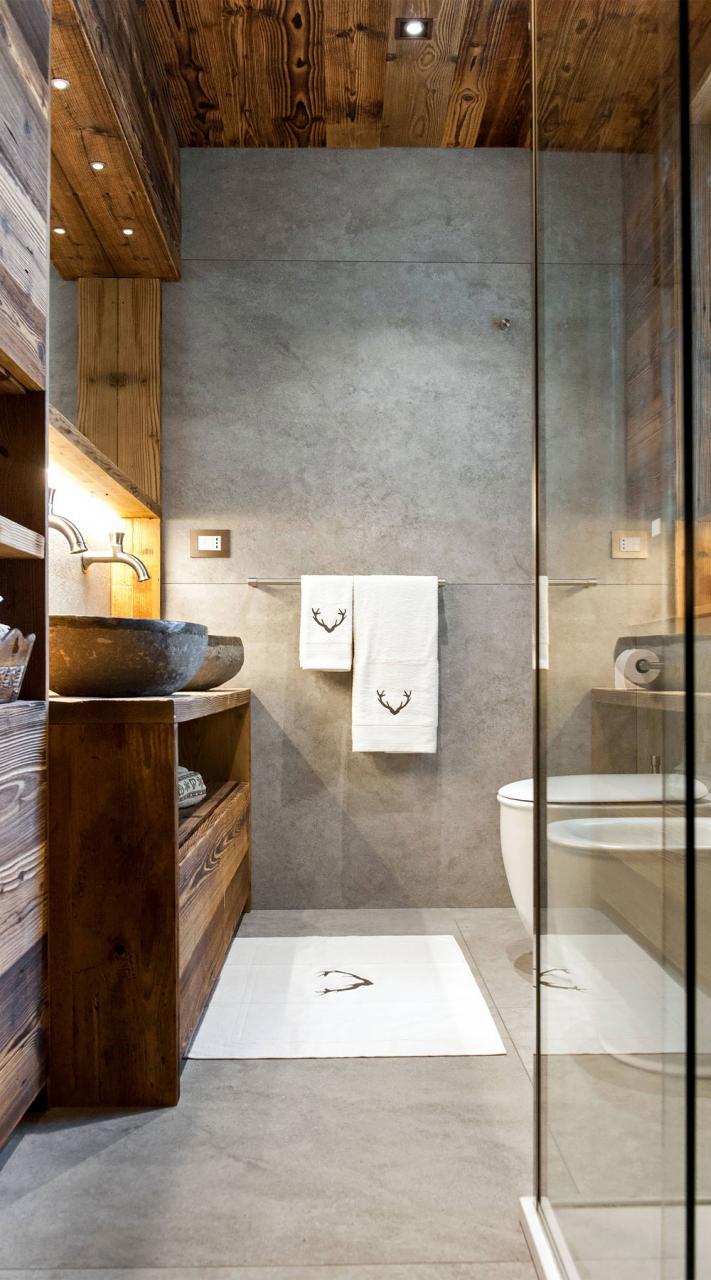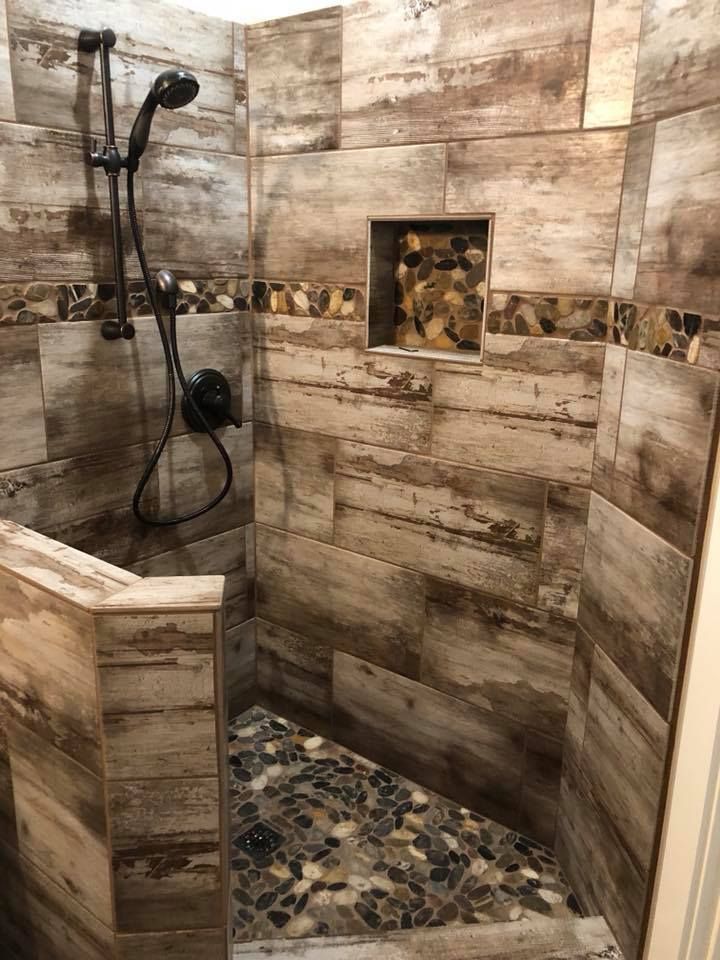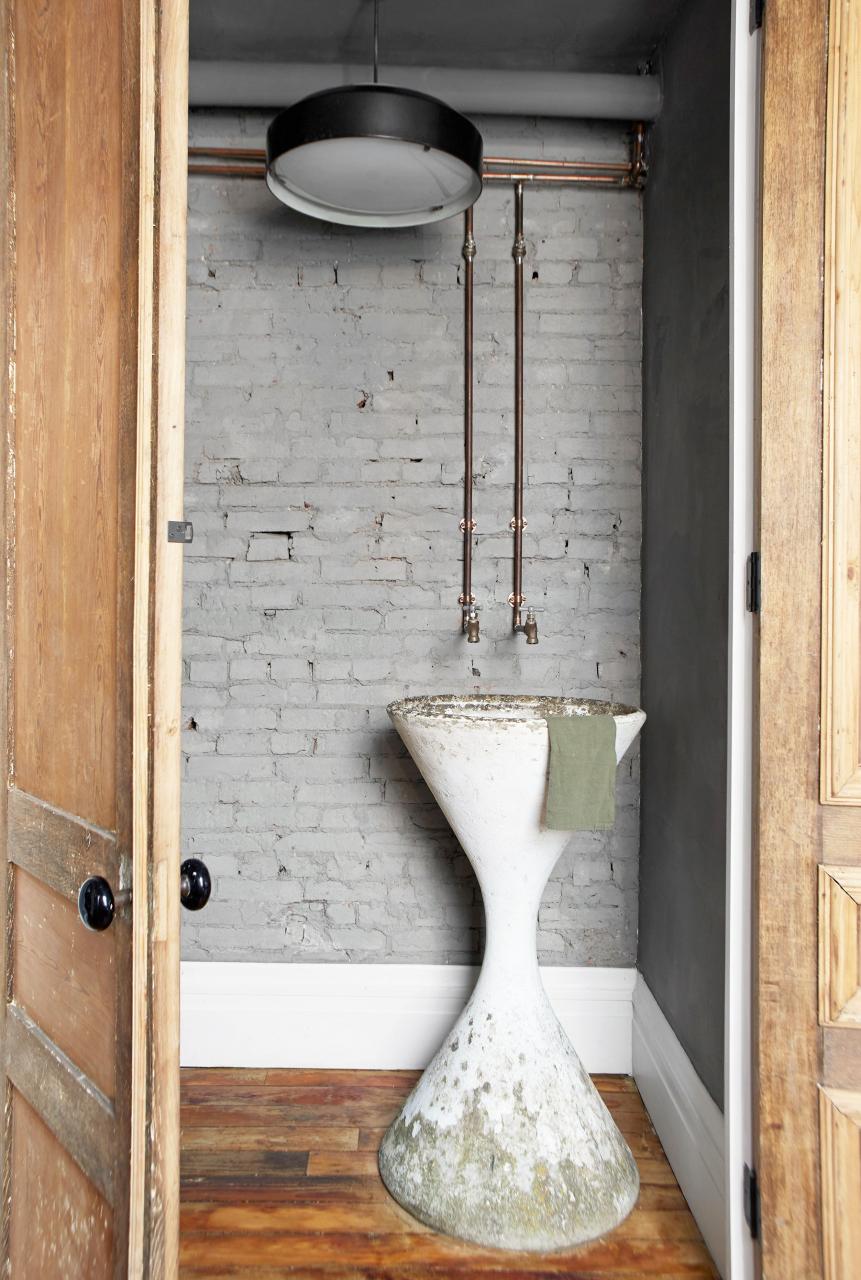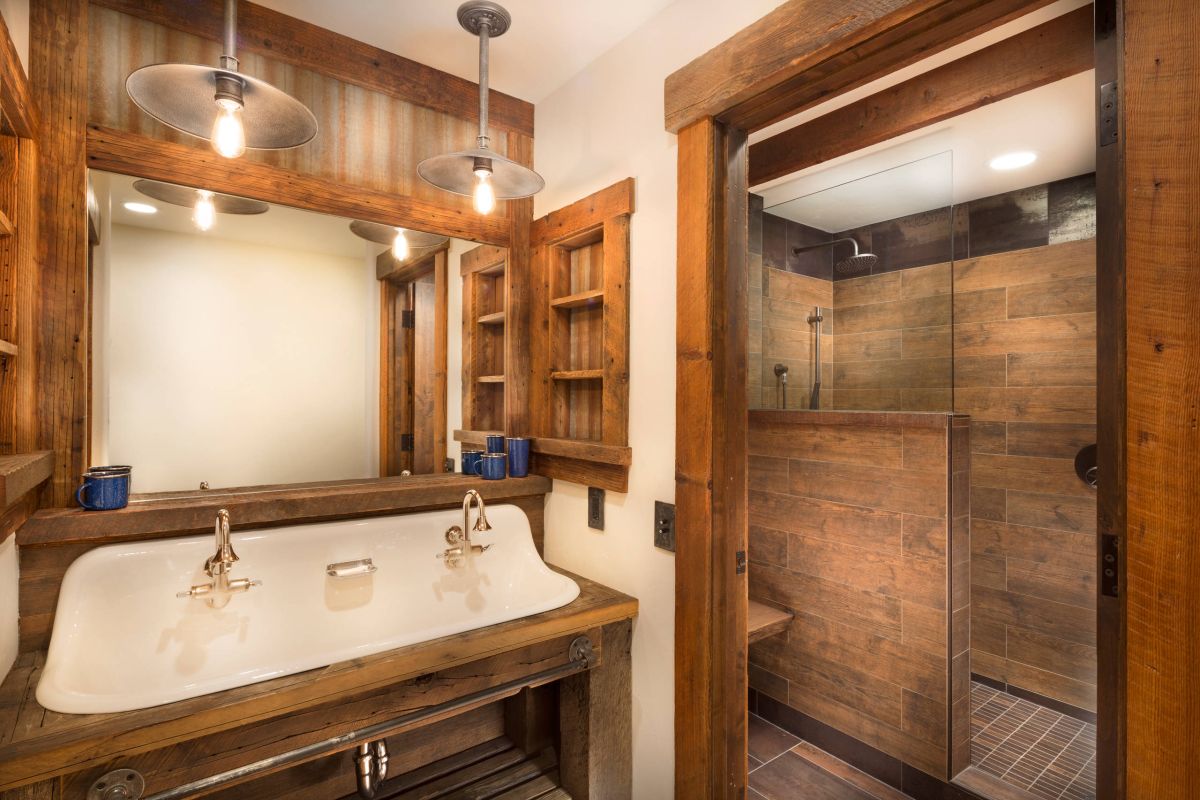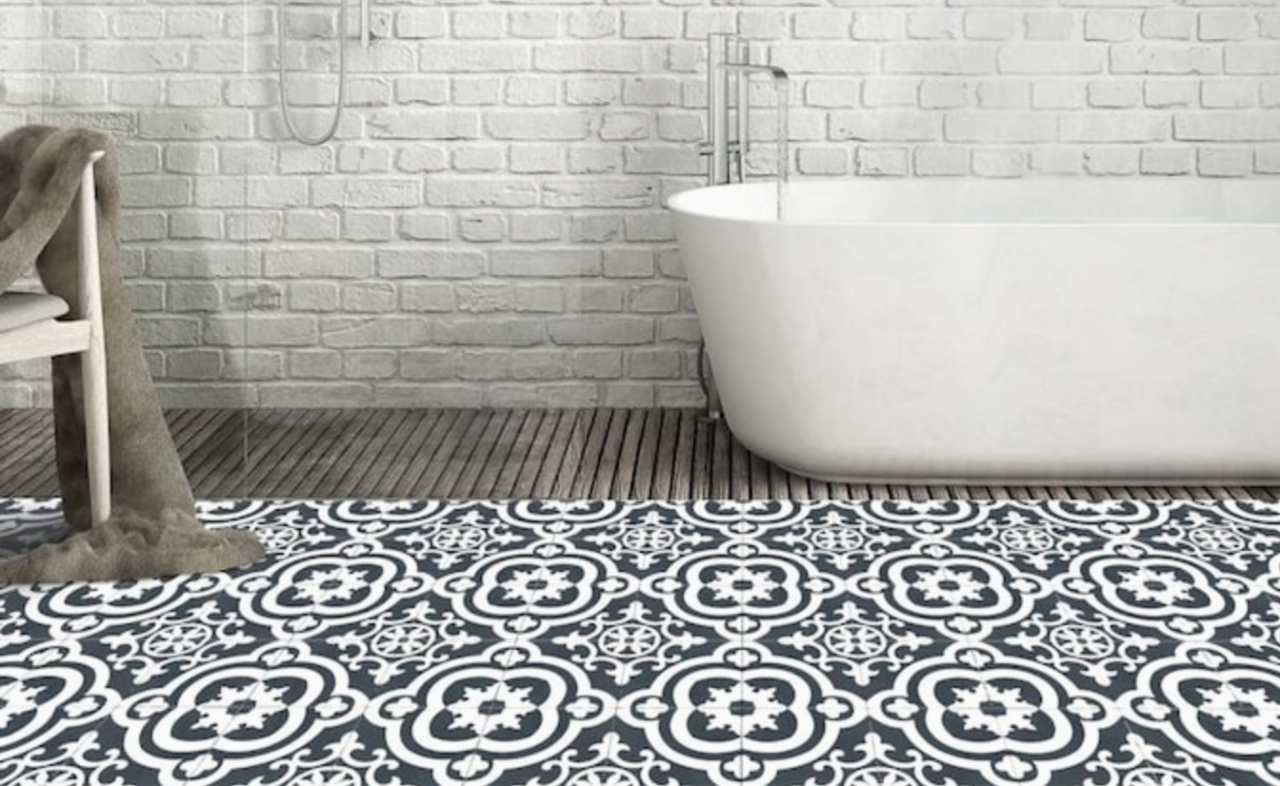Natural Stone Tiles: Embracing the Beauty of Raw Elements
Natural stone tiles are a timeless choice for rustic bathrooms, offering an unparalleled connection to nature through their raw and organic beauty. Each stone tile is unique, showcasing the rich textures and earthy tones that bring warmth and authenticity to any space. Here are some key considerations when choosing natural stone tiles for your rustic bathroom.
- Variety of Stones: Natural stone tiles come in a variety of options, including marble, travertine, slate, limestone, and granite. Each type has its unique characteristics, from the veining in marble to the rugged texture of slate. The choice of stone depends on the desired look and functionality, as some stones are more porous and require more maintenance.
- Textural Appeal: One of the main attractions of natural stone tiles is their textural variation. Whether polished, honed, or tumbled, each finish offers a different tactile experience. Tumbled stones, for instance, have a softer, more weathered appearance, making them ideal for a rustic bathroom setting. The texture not only adds visual interest but also provides slip resistance, an important consideration for bathroom floors.
- Natural Color Palette: The natural hues of stone tiles range from soft creams and earthy browns to bold grays and blacks. This wide spectrum allows for creative freedom in designing a rustic bathroom. For a serene and calming effect, consider using lighter stones like limestone or marble. For a more dramatic and rugged look, slate or dark granite can create a striking contrast.
- Versatility in Application: Natural stone tiles can be used throughout the bathroom, from floors and walls to shower areas and backsplashes. Their versatility makes them a popular choice for creating a cohesive and luxurious look. Stone tiles can also be cut into various shapes and sizes, allowing for unique patterns and designs, such as herringbone or mosaic layouts.
- Maintenance Considerations: While natural stone tiles are durable, they do require some maintenance to keep them looking their best. Sealing the tiles is essential to protect against stains and moisture. Regular cleaning with pH-neutral products is recommended to avoid damaging the stone. It’s important to choose the right type of stone and finish that suits your lifestyle and maintenance preferences.
- Eco-Friendly Choice: Natural stone is a sustainable and environmentally friendly option for bathroom tiles. As a natural material, it has a lower environmental impact compared to synthetic alternatives. Additionally, the longevity and durability of stone tiles mean they are less likely to need replacement, reducing waste over time.

Wood-Look Tiles: Achieving Warmth with Durability
Wood-look tiles have become a popular choice for rustic bathrooms, combining the warm and inviting aesthetic of wood with the durability and practicality of tile. These tiles are designed to mimic the appearance of real wood, offering a variety of styles and finishes that suit different rustic themes. Here’s why wood-look tiles are a great choice for your bathroom.
Authentic Appearance: Advances in printing technology have made it possible for wood-look tiles to closely resemble natural wood, complete with realistic grains, knots, and textures. Whether you prefer the look of reclaimed barn wood, weathered driftwood, or smooth hardwood, there’s a wood-look tile to match your vision.
Durability and Water Resistance: Unlike real wood, which can warp or stain when exposed to moisture, wood-look tiles are made from materials like porcelain or ceramic that are water-resistant. This makes them ideal for bathroom use, where moisture and humidity levels are high. They are also highly durable and resistant to scratches and dents, making them a long-lasting choice.
Versatile Design Options: Wood-look tiles are available in a wide range of colors and styles, from light, bleached woods to rich, dark tones. This versatility allows for creative expression, whether you’re aiming for a rustic farmhouse look, a sleek modern aesthetic, or something in between. The tiles can be laid in various patterns, such as herringbone, chevron, or traditional plank layouts, adding to their design flexibility.
Low Maintenance: One of the significant advantages of wood-look tiles is their low maintenance requirements. Unlike natural wood, which needs regular sealing and careful cleaning, wood-look tiles are easy to maintain. They can be cleaned with standard tile cleaners and don’t require special treatments to keep them looking new.
Eco-Friendly Alternative: For those concerned about sustainability, wood-look tiles are an eco-friendly alternative to real wood flooring. They do not contribute to deforestation and are often made from recycled materials. Additionally, their durability means they have a longer lifespan, reducing the need for replacement and minimizing waste.
Comfort and Warmth: While tile floors can sometimes feel cold, wood-look tiles have a warmer, more inviting appearance that can make a bathroom feel cozy. They can also be paired with underfloor heating systems, providing a comfortable and luxurious experience, especially in colder climates.
Textured Tiles: Adding Depth and Interest
Textured tiles are a fantastic way to add depth and visual interest to a rustic bathroom. These tiles feature surface variations that can range from subtle to bold, offering a tactile element that enhances the overall design. Here’s how textured tiles can transform your rustic bathroom into a stylish and inviting space.
Variety of Textures: Textured tiles come in an array of surface finishes, including matte, glossy, and satin. Some tiles feature raised patterns, while others have a natural stone or wood grain texture. These textures not only add visual interest but also provide a tactile experience that can make a bathroom feel more engaging and dynamic.
Creating Focal Points: Textured tiles are ideal for creating focal points in a bathroom. Use them on a feature wall, in the shower area, or as a backsplash to draw the eye and add character to the space. For example, a wall covered in textured stone tiles can serve as a stunning backdrop for a rustic vanity or freestanding bathtub.
Combining Textures: Mixing different textures within the same space can create a layered and cohesive look. For instance, pairing smooth, glossy tiles with rough, textured ones can create a striking contrast. This combination can be used to define different areas within the bathroom, such as the shower, vanity, and floor, adding both style and function.
Functional Benefits: In addition to their aesthetic appeal, textured tiles also offer functional benefits. They provide better traction, making them a safer choice for bathroom floors, especially in wet areas. Textured surfaces can also hide dirt and water spots better than smooth tiles, reducing the appearance of wear and tear.
Material Options: Textured tiles are available in a variety of materials, including ceramic, porcelain, stone, and even glass. Each material offers different benefits and aesthetics, allowing you to choose the best option for your design and budget. For a truly rustic look, consider natural stone tiles with a rough, unpolished surface.
Maintenance Considerations: While textured tiles can add beauty and functionality to a bathroom, they do require specific maintenance. The texture can trap dirt and grime, so regular cleaning is essential to keep them looking their best. Use appropriate cleaning products and tools to avoid damaging the tile surface and maintain its appearance over time.
Mosaic and Pebble Tiles: Creating Artistic Accents
Mosaic and pebble tiles are excellent choices for adding artistic accents and unique flair to a rustic bathroom. These tiles can be used in various applications, from shower floors and backsplashes to accent walls, providing a visually stunning and texturally rich element to the space. Here’s how to incorporate mosaic and pebble tiles into your rustic bathroom design.
Diverse Materials and Designs: Mosaic tiles are available in a wide range of materials, including glass, ceramic, stone, and metal. They come in various shapes, sizes, and colors, allowing for endless design possibilities. Pebble tiles, often made from natural stones, offer a more organic and earthy look, perfect for rustic aesthetics.
Creating Visual Interest: Mosaic and pebble tiles are ideal for creating focal points and adding visual interest to a bathroom. Use them to create a decorative backsplash behind the vanity, an accent wall, or a unique shower floor. The intricate patterns and textures of these tiles can break up the monotony of plain tiles and add depth to the design.
Customizable Patterns: One of the significant advantages of mosaic tiles is their versatility in creating custom patterns and designs. You can mix and match different colors and materials to create intricate designs, from geometric patterns to more abstract compositions. Pebble tiles can also be arranged in various ways, such as creating a river rock effect or a mosaic-inspired design.
Natural and Organic Feel: Pebble tiles, in particular, add a natural and organic feel to a bathroom. The smooth, rounded stones mimic the look of a riverbed, bringing a touch of nature indoors. This makes them an excellent choice for creating a spa-like atmosphere in the bathroom, enhancing relaxation and tranquility.
Durability and Functionality: Both mosaic and pebble tiles are durable and suitable for various bathroom applications. They are water-resistant and easy to clean, making them practical choices for areas exposed to moisture. Pebble tiles, with their textured surface, also provide good traction, making them ideal for shower floors.
Installation Considerations: Installing mosaic and pebble tiles requires careful planning and precision. Due to their small size and intricate patterns, professional installation is often recommended to ensure a flawless finish. Proper sealing is also essential, especially for natural stone mosaics and pebbles, to protect them from moisture and staining.
Distressed and Weathered Tiles: Capturing Vintage Charm
Distressed and weathered tiles are perfect for achieving a vintage, lived-in look in a rustic bathroom. These tiles are designed to mimic the appearance of aged, worn surfaces, adding character and charm to the space. Here’s how to use distressed and weathered tiles to create a bathroom with a unique and authentic feel.
The Appeal of Imperfection: One of the key features of distressed and weathered tiles is their imperfect, timeworn appearance. These tiles often feature irregular edges, faded colors, and surface variations that give them a rustic, old-world charm. This imperfect look is what makes them so appealing, as it adds a sense of history and personality to the space.
Variety of Styles: Distressed and weathered tiles come in a range of styles and materials, including ceramic, porcelain, and natural stone. You can find tiles that mimic the look of weathered wood, aged metal, or vintage encaustic tiles. The choice of style depends on the overall aesthetic you want to achieve, from rustic farmhouse to industrial chic.
Creating a Vintage Vibe: These tiles are perfect for creating a vintage vibe in a rustic bathroom. Use them on the floor, walls, or as an accent in the shower area. For a truly authentic look, consider mixing different styles and colors to mimic the patchwork appearance of old, reclaimed tiles. This eclectic mix can add depth and interest to the bathroom design.
Combining with Modern Elements: While distressed and weathered tiles are perfect for a vintage look, they can also be combined with modern elements for a more contemporary take on rustic design. Pair them with sleek fixtures, minimalist cabinetry, or modern lighting to create a balanced and sophisticated space. This combination of old and new can result in a unique and stylish bathroom.
Durability and Maintenance: Despite their aged appearance, distressed and weathered tiles are often made from durable materials that can withstand the rigors of a bathroom environment. They are typically resistant to moisture and stains, making them a practical choice for areas exposed to water. Regular cleaning and sealing are recommended to maintain their appearance and longevity.
Eco-Friendly Option: Distressed and weathered tiles can also be an eco-friendly option. Some manufacturers use recycled materials or employ sustainable production processes to create these tiles. Additionally, choosing tiles that mimic the look of reclaimed materials reduces the demand for new resources, making them a more sustainable choice for environmentally conscious homeowners.
Neutral and Earthy Tones: Building a Soothing Palette
Neutral and earthy tones are a cornerstone of rustic bathroom design, offering a soothing and timeless palette that brings a sense of calm and relaxation. These colors are inspired by nature and create a warm, inviting atmosphere. Here’s how to use neutral and earthy tones to build a beautiful and serene rustic bathroom.
The Beauty of Neutral Colors: Neutral colors, such as beige, gray, taupe, and white, form the foundation of a rustic bathroom’s color palette. These shades are versatile and can be used in various ways, from walls and floors to fixtures and accessories. Neutral colors create a clean and cohesive look, making the bathroom feel more spacious and open.
Incorporating Earthy Tones: Earthy tones, including shades of brown, green, and terracotta, add warmth and depth to a neutral palette. These colors are reminiscent of natural landscapes and help to create a connection with the outdoors. Incorporate earthy tones through tiles, paint, or decorative elements to add richness and character to the bathroom.
Balancing Warm and Cool Tones: A balanced mix of warm and cool tones can create a harmonious and visually appealing space. For example, pair warm beige tiles with cool gray accents, or combine a warm brown vanity with a soft white countertop. This balance prevents the bathroom from feeling too monotone and adds dimension to the design.
Using Texture to Enhance Neutrals: Texture plays a crucial role in enhancing neutral and earthy tones. Incorporate textured tiles, such as stone or wood-look tiles, to add visual interest and depth. Textured materials not only enrich the color palette but also create a more tactile and engaging environment.
Accents and Accessories: While neutral and earthy tones are the primary focus, don’t be afraid to introduce subtle accents in complementary colors. For instance, soft blues, greens, or muted golds can add a touch of color without overpowering the rustic theme. Use these accents in accessories, such as towels, rugs, or artwork, to add a bit of personality to the space.
Creating a Soothing Ambiance: The ultimate goal of using neutral and earthy tones in a rustic bathroom is to create a soothing and relaxing ambiance. These colors evoke a sense of calm and tranquility, making the bathroom a perfect retreat for unwinding. Enhance this ambiance with natural elements, such as plants, wooden furniture, or stone accessories, to complete the rustic look.
Cool Rustic Bathroom Designs
Rustic bathroom ideas: 10 ways to create a country washroom Real
Rustic Bathroom Designs
Best Rustic Bathroom Decor Ideas & Designs
Rustic Bathroom Ideas – Cool Bathrooms
This beautiful rustic-modern shower combines our Brentwood Cream
Farmhouse Bathroom Design Ideas – Farmhouse Bathroom Decor
Wood Tile Showers For Your Bathroom
Related Posts:
